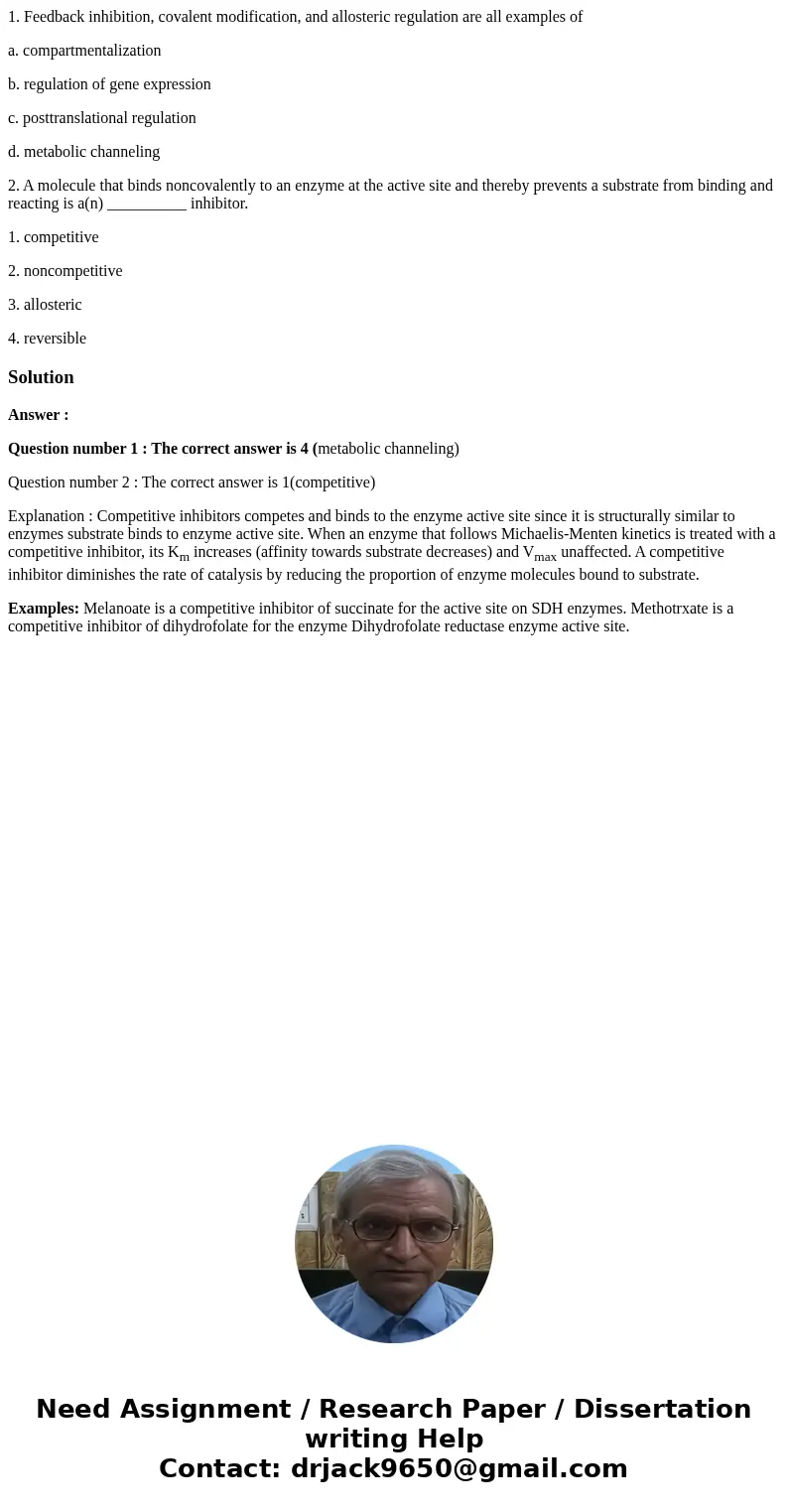1 Feedback inhibition covalent modification and allosteric r
1. Feedback inhibition, covalent modification, and allosteric regulation are all examples of
a. compartmentalization
b. regulation of gene expression
c. posttranslational regulation
d. metabolic channeling
2. A molecule that binds noncovalently to an enzyme at the active site and thereby prevents a substrate from binding and reacting is a(n) __________ inhibitor.
1. competitive
2. noncompetitive
3. allosteric
4. reversible
Solution
Answer :
Question number 1 : The correct answer is 4 (metabolic channeling)
Question number 2 : The correct answer is 1(competitive)
Explanation : Competitive inhibitors competes and binds to the enzyme active site since it is structurally similar to enzymes substrate binds to enzyme active site. When an enzyme that follows Michaelis-Menten kinetics is treated with a competitive inhibitor, its Km increases (affinity towards substrate decreases) and Vmax unaffected. A competitive inhibitor diminishes the rate of catalysis by reducing the proportion of enzyme molecules bound to substrate.
Examples: Melanoate is a competitive inhibitor of succinate for the active site on SDH enzymes. Methotrxate is a competitive inhibitor of dihydrofolate for the enzyme Dihydrofolate reductase enzyme active site.

 Homework Sourse
Homework Sourse